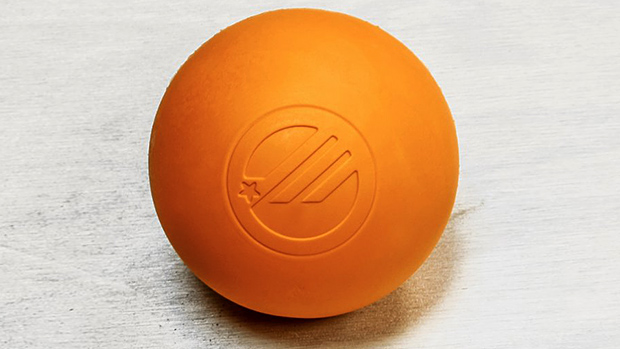Part 1 – Nonstop Natural Gains: The Neuro Typing System
Part 2 – Unlock Natural Gains: Neuro Type 1
Part 3 – Double Your Natural Gains: Neuro Type 2
Part 4 – Never-Ending Natural Gains: Neuro Type 3
Part 5 – The Neuro Type Workouts
Part 1 of this series introduces you to neurological typing. In short, your baseline levels of three neurotransmitters (dopamine, serotonin and norepinephrine) strongly influence your personality and dictate your how you should train and eat for best results.
Your personality profile is largely determined by three key neurotransmitters: dopamine, serotonin, and norepinephrine. Your baseline levels of these chemical messengers are determined by genetics.
The three basic personality types are:
- Type 1: Novelty seeker
- Type 2: Reward dependant
- Type 3: Harm avoider
Each has its positives and its negatives. If you adopt a training style that doesn't match your psychological and neurological type, you simply won't get results from it, no matter how well-designed the program is.
In this series, we'll go over each type and what type of training, nutrition and supplement plan is best for each. To determine your type, review Nonstop Natural Gains: The Neuro Typing System.
Below we'll cover the novelty seeker. This type has a low dopamine level, causing him or her to seek out new things to stimulate it. You could call them "adrenaline junkies."
Optimal Training for Type 1: Novelty Seekers
Novelty seekers have less dopamine than serotonin. They must increase dopamine prior to starting the actual workout to have good motivation and work capacity. If they don't, performance will suffer in the first part of the workout.
For that reason, it's very important for them to focus on activation drills prior to starting their workouts: jumps, throws, high speed movements, etc. The focus needs to be on speed – moving violently but without creating a lot of fatigue. Example: 3 sets of 5 vertical jumps. Or striking a tire with a sledgehammer for 3 sets of 12 seconds.
When it comes to the main heavy lift of the day, they should ramp up to the working weight while doing gradually heavier sets and focus on compensatory acceleration (CAT). That's where you accelerate the weight as fast as possible during the concentric or lifting phase of the rep. This acceleration will increase force production and will amp up the nervous system by increasing the release of dopamine.
A ramp should start at around 60% of your max. Do around 5 ramp-up sets before doing the work sets. These ramp-up sets should only be done for the same number of reps that you plan to do on your work sets, or lower. You want to amp up the nervous system without creating fatigue. A ramp could look like this:
Ramp-Up Sets:
- Set 0: bar x 10
- Set 1: 165 x 3
- Set 2: 195 x 3
- Set 3: 215 x 3
- Set 4: 235 x 3
- Set 5: 255 x 3
- Note: Use maximum concentric acceleration on sets 1-5.
Work Sets:
- Set 6: 275 x 5
- Set 7: 275 x 5
- Set 8: 275 x 5
- Set 9: 275 x 5
Remember that dopamine and adrenaline are connected. Dopamine is used to produce norepinephrine which is used to produce epinephrine/adrenaline. So anything that amps you up will raise dopamine levels.
Just be careful not to overdo it. This type has a low baseline dopamine level and can produce spurts of it, but they crash if they have to produce too much. When that happens during a workout, their willpower and motivation goes down the drain.
Type 1 lifters need a lot of variation in their training. They're your typical "I can't follow a program" guys. They always want to try something new. If you put them on programs like 5/3/1 or The Power Look (programs based around doing the same stuff over and over) they'll get de-motivated and won't get results.
We often say that we need to stick to a program to make progress, but in their case it's not necessarily true. Remember, whatever helps you train the hardest will give you the best results. On a static program, novelty seekers get bored easily and will lose focus if the training is too repetitive. In their case, a lack of sufficient variety is actually a stressor.
This neuro type...
- Can stay on a program for 2 weeks.
- Does better on multiple types of stimulation in a week.
- Does better when different types of stimulation are included within a workout.
- Cybernetic periodization (freedom within a structure) is a great approach for them. This refers to pre-planning the first big lift of the workout but selecting the assistance work based on the performance of the main lift.
Surprisingly, a lot of powerlifters are novelty seekers. The Westside Barbell system is the perfect example. They vary the main lift every one to two weeks, they do three types of stimulation per week (four if you include conditioning), and they use cybernetic periodization by selecting their daily assistance exercises based on how they performed on the main lift. Oddly enough, CrossFit is also a perfect example, especially the shorter 8-15 minutes WODs.
Now, the need for variation doesn't mean you have to change all the variables. For example, you can change the exercises, or keep the exercises and change the methods.
Type 1 lifters do better with shorter but more frequent workout. These types of workouts increase dopamine without making it crash.
For this type, a day off is less effective than a small restorative workout. Taking two days off in a row will negatively affect their trainability – it'll take them 30-40 minutes just to get in the zone. Their motor control, as well as motivation to train, will be off.
A very hard workout including a lot of heavy work (a high volume of heavy lifting) or a maximal effort session (going up to a 1, 2 or 3RM on a big lift) can drain their dopamine. It might take them a few days to replenish it. When that happens they either hit a wall two hours after their workout or they feel lethargic, short tempered, or have low motivation the next day.
When that happens, the Type 1 athlete needs restorative workouts, the best example being my Neural Charge Training workouts. Restorative workouts need to be short and focused on explosive work. They shouldn't cause any metabolic fatigue. In fact, you should have more energy after the workout than before.
Restorative workouts shouldn't be done anywhere close to failure since we don't ever want speed to decrease. You also need to keep the pace of the workout fast without turning it into a conditioning session.
The Westside Dynamic Effort day actually works mostly by replenishing the dopamine depleted during the max effort session. Most Westside guys are likely extroverted, competitive, novelty seekers.
A good weekly ratio of training sessions would be two high stress sessions, two moderate stress sessions, and two restorative workouts per week:
- Day 1: High
- Day 2: Restorative
- Day 3: Moderate
- Day 4: High
- Day 5: Restorative
- Day 6: Moderate
- Day 7: Off
Or 6 workouts per 8 days:
- Day 1: High
- Day 2: Restorative
- Day 3: Moderate
- Day 4: Off
- Day 5: High
- Day 6: Restorative
- Day 7: Moderate
- Day 8: Off
Remember, if this neuro type has two off days in a row, workout quality will suffer because the nervous system will be sluggish.
Work capacity is fairly low with Type 1 lifters. They perform great, especially in strength and explosive work, but they can crash fast. There are exceptions: if they have a high acetylcholine level they can actually tolerate volume well, but these are the genetic-freak power athletes.
- Type 1 lifters should focus on sticking to 45-60 minute workouts (after workout prep). This isn't to avoid drops in testosterone or increasing cortisol. It's to avoid dopamine depletion and diminished focus and motivation. Go hard and go home.
- A workout comprised of one main lift and two pairings (antagonistic pairings or supersets for example) for a total of 5 exercises works well. The "pairings" decrease the repetitive feeling.
- They can use minimalist training (numerous sets of 1 or 2 exercises per session) but should use several methods in the same workout to prevent the feeling of repetitiveness. Example: The Layer System
- Extreme novelty seekers – super explosive but with an extremely short attention span – will be able to tolerate a total of 9-12 work sets in a workout. That's not per muscle, but per workout. But the Type 1 can tolerate 16-18 sets for the entire workout.
Type 1 athletes do better on lower reps of explosive or heavy work. Longer-duration reps, especially on big compound movements, will decrease their motivation. For the big lifts, they should stick to sets of 4-6 when trying to build muscle and 1-3 reps when focusing on strength.
For smaller isolation exercises, they can go up to 8-10 reps per set when trying to build muscle and use 6-8 reps per set when focusing on strength.
They do better on short rest intervals and a fast workout pace: they need to keep adrenaline high to stay focused.
These are other ways to include variation. Novelty seekers don't need to change exercises all the time; they can also change how they perform them.
Means
Tools used when executing a movement pattern. Changing from a regular bar to a fat bar is a change of means. Examples of means: specialty bars, chains, bands, hanging band technique, weight releasers, dumbbells, kettlebells, pulley system.
Methods
How the reps are performed. For example, changing the speed of the lifting or lowering portion of the rep, adding isometric pauses during the concentric or eccentric phase, doing partial reps, etc.
Strategies
How the sets are organized (sets x reps) and the use of intensifiers like rest/pause and drop sets.
For Type 1 lifters, changing some of the means, methods, or strategies every two weeks is optimal. Extreme cases should change every week, especially very advanced lifters. These don't need to be huge changes, but have a slightly different feel to keep it interesting and trigger a slightly higher dopamine release.
They respond best to strategies where the reps are different from set to set. Examples: wave loading (5/4/3/5/4/3), descending sets (5/4/3/2/1) or contrasts (3/6/3/6/3/6).
If they want to use higher reps, they respond better to strategies that still have a low-rep feel: clusters, rest/pause, myo reps, post-fatigue isometric, pre-fatigue isometric, etc.
Straight sets – doing the same number of reps with same weight – are very de-motivating to novelty seekers, especially on the big compound lifts. They might decrease dopamine release. Want to de-motivate this neuro type and make him stop training? Have him do German Volume Training: 10 sets of 10 reps on an exercise.
Ramping using the same number of reps (doing sets of 3, adding weight every set) is okay because the change in weight does provide a feeling of challenge, which is motivating to them.
Keep in mind, when talking about exercise order we're only talking about the "building" work. Workout prep isn't included. We assume that proper workout prep has been followed.
Type 1 lifters do better when the main lift of the day is done second in the workout. They take a bit longer to get neurologically activated, so it's best to start the workout with an isolation exercise for the main muscle in the big lift, or for a muscle involved in the stabilization of the lift. Example: lats in the bench press (peripheral activation).
Dopamine levels tank fast, so doing the big lift too late in the workout will have the same impact as doing a max effort or doing too much volume: rapid dopamine depletion.
Type 1's don't do well on a percentage based progression model. They lose interest and feel trapped. The RM system – using the most weight they can in good form for the prescribed rep – is more effective. It makes the workout look more "open" or adaptable.
This neuro type will normally hate a program like 5/3/1 or my 915 Workout Program. Both are great, but because they use a fixed progression model it can be really de-motivating to the novelty seeker.
They respond better to drastic phase changes (accumulation/intensification). These are the guys who do great by completely changing their training style every three months or so.
- This neuro type does well on low carb, higher fat diets with moderate to high protein. This doesn't necessarily make them lose fat faster, but it makes them feel better and they get fewer cravings. Low carb diets decrease serotonin. Since this type has high serotonin, he's not as negatively affected by such a decrease. In fact, it might even improve his work capacity and motivation by increasing the dopamine to serotonin ratio.
- When dieting, Type 1 lifters need more frequent refeeds. When the hormone leptin is high, the body feels well fed and keeps the metabolic rate humming. When leptin drops down, the metabolic rate goes down and cravings increase.
- Low leptin levels also lead to an overreaction of the Ventral Tegmental Area (VTA) – the dopamine response is enhanced. When that happens, just thinking about cheat foods and anticipating them will spike dopamine. This will make it almost impossible to stick to a diet once leptin levels drop. Leptin will drop when you're on a restrictive diet for a long time without breaks. As a result, the novelty seeker needs more frequent refeeds. A ratio of 3 or 4 days of intense dieting followed by one day of refeeding – with quality food to avoid excessive dopamine stimulation and addiction to eating crap – works best.
- Type 1 athletes should avoid "cheat foods" that are high in sugar, which can overstimulate dopamine receptors and increase the risk of sugar addiction.
- They do better on short but intense diets (3-6 weeks of a large caloric deficit) than on longer, more moderate diets.
- They should minimize the use of straight BCAAs because they compete with L-Dopa for transporters across the blood-brain barrier, which will decrease dopamine levels.
- Having carbs pre-workout can drastically lower cortisol levels, making most people more anabolic. But Type 1's might have problems with carbs pre-workout. See, pre-workout carbs might increase their serotonin, which is already high. Motivation, work capacity, and training aggressiveness require a relatively higher dopamine level compared to serotonin.
- The only type of carb that will work well for novelty seekers when used pre-workout is highly-branched cyclic dextrin since it has a low glycemic index and doesn't impact insulin. Surge® Workout Fuel pre-workout is the best strategy.
- When dieting to lose fat, most of their carbs should be consumed around workout time. If they're in a mass gaining phase, having some carbs in the morning is fine but avoid them in the evening.
- Type 1's should avoid big meals during the day because they will switch to para-sympathetic mode, making them more sluggish and less energetic. A larger dinner in the evening is a better strategy.
Next we'll cover training, diet, and supplementation for Type 2: the reward dependant.





